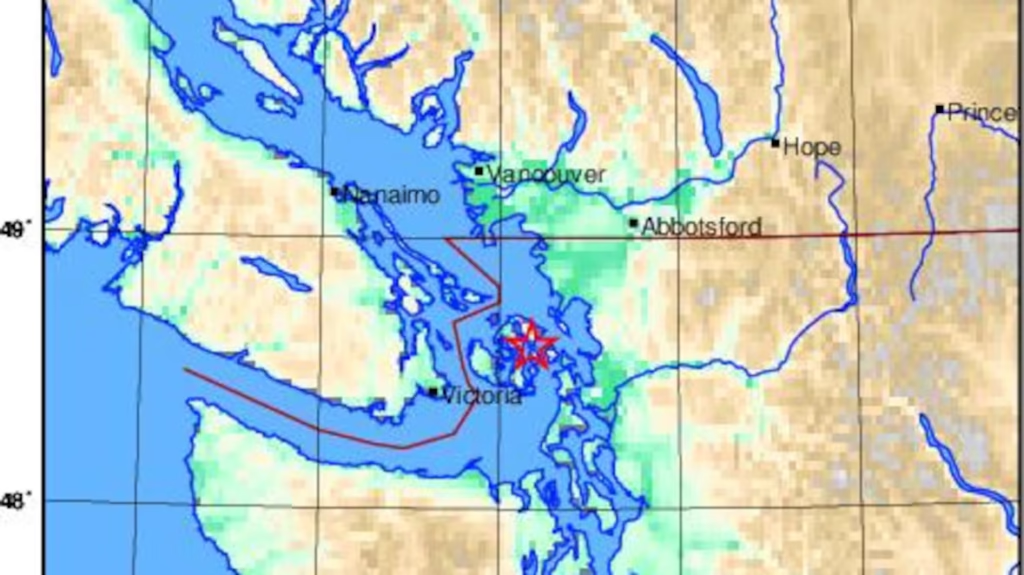A mild earthquake struck near Sidney, British Columbia, early Monday morning, briefly shaking homes across southern Vancouver Island and parts of the Lower Mainland. Officials say there were no reports of damage, and the tremor serves as a reminder to stay prepared for future seismic activity.
According to Earthquakes Canada, the 4.1-magnitude quake occurred at 5:02 a.m. Pacific Time on March 3, 2025. The epicenter was located about 42 kilometers east of Sidney, near Orcas Island in Washington state, close to the Southern Gulf Islands.
The earthquake was originally recorded at magnitude 4.5 but later revised to 4.1 after further analysis. Seismologists confirmed the quake was about 15 to 20 kilometers deep, making it shallow enough for people in nearby regions to feel it.
Residents in Victoria, Vancouver, and parts of Vancouver Island reported light shaking that lasted only a few seconds. Despite the widespread awareness, no damage, injuries, or power outages were reported. Officials also confirmed there was no tsunami risk, as the tremor’s strength was below the danger threshold.
John Cassidy, a seismologist with Natural Resources Canada, said he felt the shaking from his home in North Saanich. He described it as a “brief but noticeable” event that startled many residents early in the morning. Cassidy added that while such tremors may feel alarming, they are normal in this part of Canada, which experiences daily minor seismic movements.
Another seismologist, Alison Bird, explained that the quake’s shallow depth and location near populated areas made it more noticeable. “It wasn’t terribly big,” she said, “but it was close enough that many people could feel it.”
This latest tremor follows a series of small earthquakes in British Columbia over recent weeks. A 4.7-magnitude quake was recorded near Sechelt on February 21, and a 5.0-magnitude quake struck off the coast of Port Alice on February 24. Experts say these events are not linked but reflect the region’s natural seismic activity.
Cassidy emphasized that multiple earthquakes occurring close together in time do not increase or decrease the risk of a larger one. “They’re all different and far enough apart that we wouldn’t expect them to be connected,” he explained.
Earthquakes Canada encouraged those who felt the shaking to complete the “Did You Feel It?” form on their website. This data helps scientists map how ground movement spreads through communities and improves their understanding of local earthquake patterns.
Emergency officials say the quake is another reminder for British Columbians to review their earthquake preparedness plans. Erin Stockill from the Saanich Emergency Program said it was her first time feeling a quake despite working in emergency management for years.
“It woke me up,” Stockill said, adding that such experiences underline the importance of muscle memory during emergencies. She urged people to remember the basic rule: “Drop, cover, and hold on.” If there’s no desk or table nearby, people should get low to the ground and protect their heads.
Once the shaking stops, officials recommend counting to 60 before moving and then checking surroundings for hazards. After the event, it’s a good time to review emergency supplies. Stockill said every household should have enough water, medication, flashlights, batteries, and food for at least 72 hours.
Prepared B.C. also advises families to think about unique needs, such as items for infants, seniors, or pets. Keeping a ready-to-go earthquake kit ensures safety and comfort in the hours following a disaster.
Seismologists continue to monitor the region for aftershocks, though none have been recorded so far. Experts say the 4.1-magnitude Sidney earthquake 2025 is a reminder of the region’s active fault lines but not a cause for alarm.

